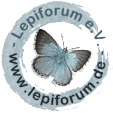2. Biologie
Noch unbekannt! Slamka (2019: 27) vermutet: "the larva probably lives on oak."
3. Weitere Informationen
3.1. Etymologie (Namenserklärung)
Kemal & al. (2020: 3) informieren zu Elegia saecula: “The name saecula of this new species means forever. “One day my mortal body will turn to dust but the Turkish Republic will stand forever” Mustafa Kemal Atatürk (1926).”
3.2. Andere Kombinationen
- Ichorarchis iozona Meyrick, 1937 [Originalkombination]
3.3. Synonyme
- Elegia saecula Kemal, Kızıldağ & Koçak, 2020 [synonymisiert von Alipanah & Slamka (2021)]
3.4. Taxonomie
Meyrick (1937: 66) beschrieb die Art als Ichorarchis iozona. Später wurde sie als Synonym zu Elegia fallax gestellt. Slamka (2019: 26) wertet das Taxon wieder zu "bona sp., stat. rev." auf.
3.5. Faunistik
Meyrick (1937: 66) beschrieb die Art nach einem einzelnen Falter aus "Iraq, Diana, 2800 feet)". Slamka (2019: 26-27) schreibt zur Verbreitung: "Known so far from Turkey, Lebanon, Iraq, Iran (Prov. Fars)."
3.6. Typenmaterial
Kemal & al. (2020: 3) geben zu Elegia saecula an: “1♂ (Holotype), 18♂♀ (Paratypes). South-East Turkey: Mardin Prov., Artuklu, Sultanköy 1.7km E 1070m (47Dc), 10 paratypes and holotype on 14.v.2017, and 8 paratypes on 15.v.2017, M. Kemal & A.Koçak leg. (Coll. Cesa).”
3.7. Literatur
- Alipanah, H., & F. Slamka (2021): On the genus Elegia Ragonot, 1887 (Pyralidae: Phycitinae: Phycitini) from Iran with description of Elegia kharazii sp. nov. — Zootaxa 4999 (3): 285-297.
- Beschreibung als Elegia saecula: Kemal, M., Kızıldağ, S. & A. Ö. Koçak (2020): Descriptions of new species of the genus Elegia from Turkey (Lepidoptera, Pyraloidea). — CESA Miscellaneous Papers 206: 1-8. [PDF auf researchgate.net]
- Erstbeschreibung: Meyrick, E. (1937): Exotic Microlepidoptera 5 (3): 65-96. [London] (Taylor & Francis).
- Slamka, F. (2019): Pyraloidea (Lepidoptera) of Europe. Volume 4. Phycitinae - Part 1. Identification - Distribution - Habitat - Biology. - 432 S., 175 Taf. mit Genitalabb., 31 Farbtaf. mit mehr als 900 Bildern zu 207 Arten; Bratislava (Eigenverlag František Slamka).




![Vorkommen im asiatischen Teil der Türkei [Slamka (2019)]](/res/img/flag/tr.gif)
![Vorkommen in Irak [Slamka (2019): Provinz Fars]](/res/img/flag/iq.gif)
![Vorkommen in Iran [Slamka (2019): locus typicus: "Diana, 2800 feet"]](/res/img/flag/ir.gif)
![Vorkommen in Libanon [Slamka (2019)]](/res/img/flag/lb.gif)

